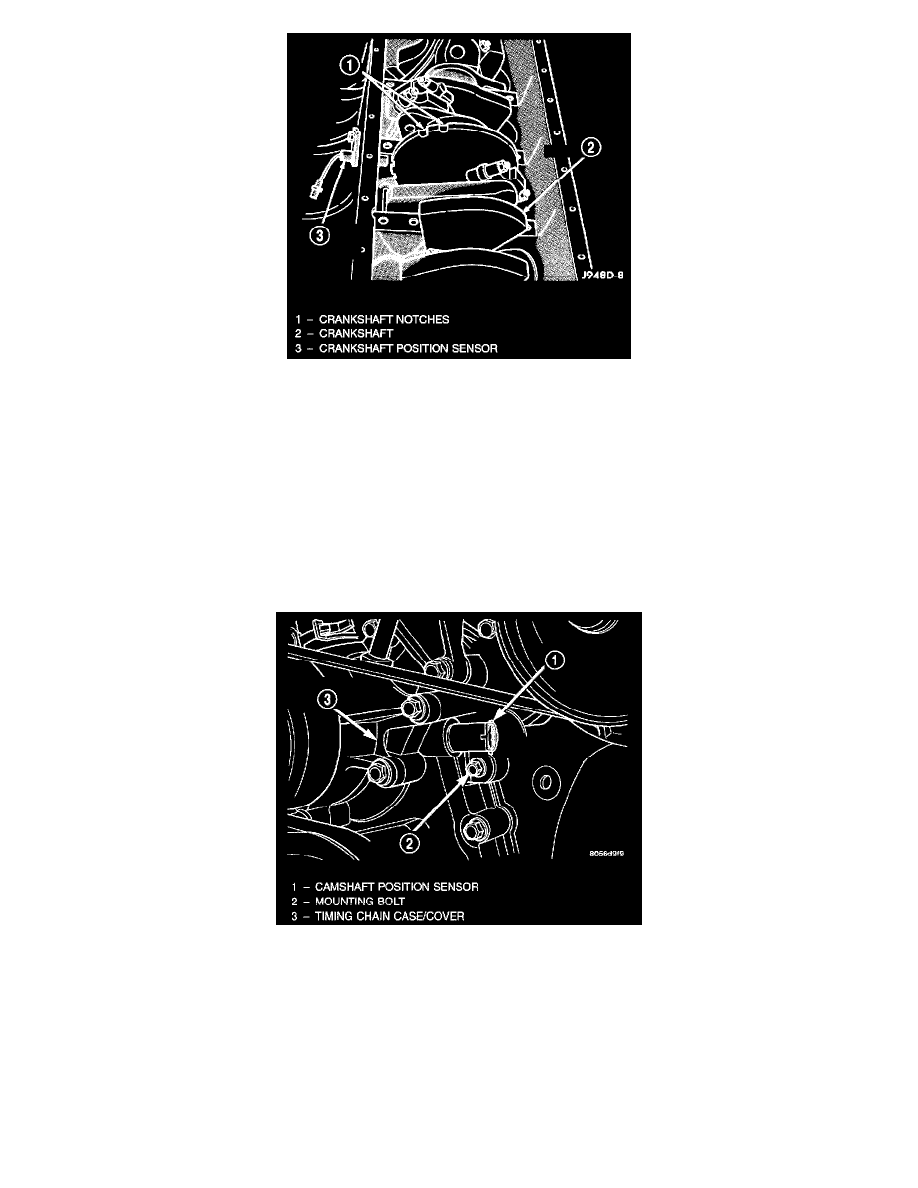RAM 2500 Truck 4WD V10-8.0L VIN W HDC (2000)

CKP Sensor Operation
The Crankshaft Position (CKP) sensor detects notches machined into the middle of the crankshaft.
There are five sets of notches. Each set contains two notches. Basic ignition timing is determined by the position of the last notch in each set of
notches.
Once the Powertrain Control Module (PCM) senses the last notch, it Will determine crankshaft position (which piston will next be at Top Dead
Center). An input from the Camshaft Position Sensor is also needed. It may take the module up to one complete engine revolution to determine
crankshaft position during engine cranking.
The PCM uses the signal from the Camshaft Position Sensor to determine fuel injector sequence. Once crankshaft position has been determined,
the PCM begins energizing a ground circuit to each fuel injector to provide injector operation.
CMP Sensor Location
CAMSHAFT POSITION SENSOR
The Camshaft Position (CMP) sensor is located on the timing chain case/cover on the left-front side of the engine.
The CMP sensor is used in conjunction with the Crankshaft Position Sensor to differentiate between fuel injection and spark events. It is also used
to synchronize the fuel injectors with their respective cylinders. The sensor generates electrical pulses. These pulses (signals) are sent to the
Powertrain Control Module (PCM). The PCM will then determine crankshaft position from both the Camshaft Position Sensor and Crankshaft
Position Sensor.
